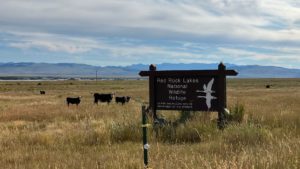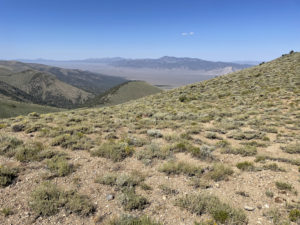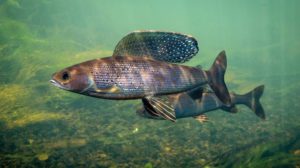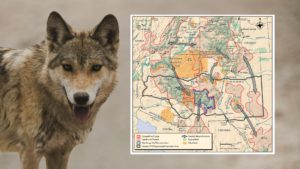For Immediate Release: 2/3/2025
Contact:
Laura Welp, Southern Utah Director, Western Watersheds Project, laura@westernwatersheds.org, 435-899-0204
Judges Halts Project to Bulldoze Reservoirs, Redistribute Cattle in Bears Ears National Monument
KANAB, Utah – An administrative judge has just issued an order blocking a Bureau of Land Management project to bulldoze 13 reservoirs for cattle on the Indian Creek grazing allotment in Bears Ears National Monument. Western Watersheds Project appealed the decision and asked the administrative court to halt the project so it could be better analyzed before doing irreparable harm to the National Monument.
“This decision halts impending environmental destruction in the northern part of Bears Ears, protecting fragile living soil crusts essential for supplying water and nutrients to the vegetation,” said Laura Welp, Southern Utah Director with Western Watersheds Project. “Federal law requires an honest, thorough analysis of project impacts, and these lands deserve a science-based federal decision that elevates protection of Bears Ears National Monument above commercial cattle grazing.“
The Nature Conservancy, which leases these National Monument lands for cattle grazing, has proposed 13 additional water reservoirs for cattle as well as additional barbed-wire fencing in the northern portion of Bears Ears. Cattle concentrate around water, impacting nearby vegetation, soils, and biological soil crust and causing desertification. This creates bare soil, spreading cheatgrass and other weeds, which is a significant ecological impact. Spreading livestock damage to ungrazed areas by drawing livestock to new reservoirs is a major land health concern. Impacts extend outward from a water source for a mile or more as cattle trail from water to forage and back again across fragile desert landscapes. The BLM did not adequately account for this in the proposal. WWP’s appeal of the project asked that it not go forward. The judge ruled that the project would cause “immediate and irreparable impacts” to National Monument lands.
The Bears Ears proclamation states that livestock grazing may occur on the monument, but only if it is consistent with protecting monument resources. The grazing allotment is categorized by the Bureau of Land Management in the “improve” category, “Allotments where current livestock grazing management or level of use on public land is, or is expected to be, a significant causal factor in the non-achievement of land health standards, or where a change in mandatory terms and conditions in the grazing authorization is or may be necessary,” according to agency direction.
“BLM should be required to show more evidence that allowing cattle into ungrazed places will not cause harms to the soils, vegetation, wildlife, and other natural and cultural values the monument was established to protect,” said Welp. “The government warns recreationists and Indigenous people not to ’bust the crust,’ but has ignored the effects that more than a thousand 1,300-pound bovines have on fragile desert soils and vegetation.”
On January 31st, the judge granted the requested petition to stay the project, agreeing that the BLM had not thoroughly studied the effects of new cattle impacts on relatively pristine areas, that the reservoirs would have irreversible impacts on the land, and that BLM had not shown that livestock would protect monument values. “Given that the only stated purpose in the EA for constructing thirteen reservoirs and five fences is to redistribute livestock, BLM had an obligation to analyze how optimized livestock distribution would impact rangeland health,” the judge wrote in her ruling. “When viewed together, the immediate and irreparable impacts associated with construction activities, concentrated use, and livestock redistribution support the imposition of a stay.”
“We are pleased that the project was halted until livestock impacts were more thoroughly studied,” said Welp. “WWP is dedicated to conservation and restoration of these fragile arid landscapes. As climate change and drought threaten our future, places like Bears Ears are our last best hope for understanding ecosystem processes and applying that knowledge to better livestock management.”
Sage Steppe Wild filed a separate appeal of the same project, and is also involved in the Stay.
Field photos of reservoir sites and cattle impacts on the Indian Creek allotment are available on request.
###






